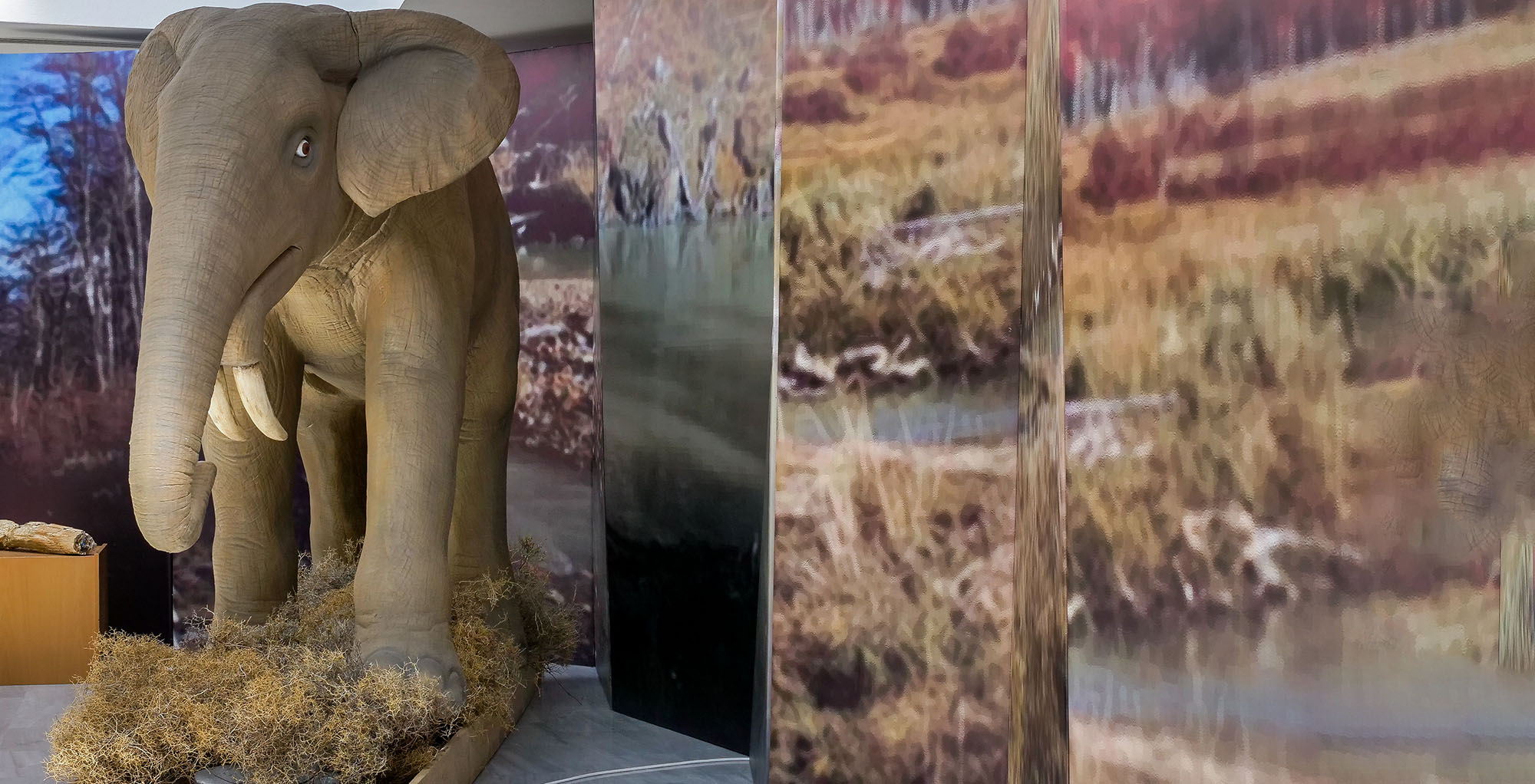The Deinotherium and the animals of the Petrified Forest of Lesvos
Studying the animal fossils of the Petrified Forest of Lesvos

Offering unique collections and a variety of activities and events, the Natural History Museum of the Lesvos Petrified Forest is always ready to welcome its visitors.
Discovering the Lesvos Petrified Forest, a unique natural monument, is an unforgettable experience.
The Natural History Museum of the Lesvos Petrified Forest is a place of education, knowledge and inspiration. Following the current theory and practices of Museum Education, it designs and implements educational programs for students of all levels of education, children of all ages and families.
The Museum operates the Lesvos Geopark and collaborates with many cultural, educational, research organizations and Museums. It is a founding member of the European and Global Geoparks Network, pioneered in the establishment of the network of the Museums of Lesvos, collaborates with schools and Environmental Education Centers, as well as with a significant number of research centers and universities in the framework of research activities.
The Natural History Museum of the Lesvos Petrified Forest (Greek: Μουσείο Φυσικής Ιστορίας Απολιθωμένου Δάσους Λέσβου) is a geological museum located in the village of Sigri on the island of Lesbos in Greece. Established in 1994, it is a center for the study, management, and preservation of the petrified forest of Lesbos and for public education about the site. It is a founding member of the European Geoparks Network and is a member of UNESCO's Global Geoparks Network.
The educational program ‘’The Deinotherium and the animals of the Petrified Forest of Lesvos’’ is inspired by the findings of paleontological research in Lesvos and introduces children with a pleasant and fun way to the world of the animals of the Petrified Forest of Lesvos. After getting to know the Petrified Forest of Lesvos through its plant fossils, the children discover the Deinotherium and the animal fossils, which are called to identify, study their characteristics and their habits. Radio chronologies will provide information on the age of the animals. Are they connected to the subtropical forest that covered the region 20 million years ago? What kind of animals were they and what is the history of the family that includes them? What conclusions can we draw about the past based on the animal fossils of this animal family?
The program includes:
Monday -Sunday: 9.00-17.00
Sigri, Lesvos island, P.C. - 81103
+30 22530 54434
lesvospf@otenet.gr